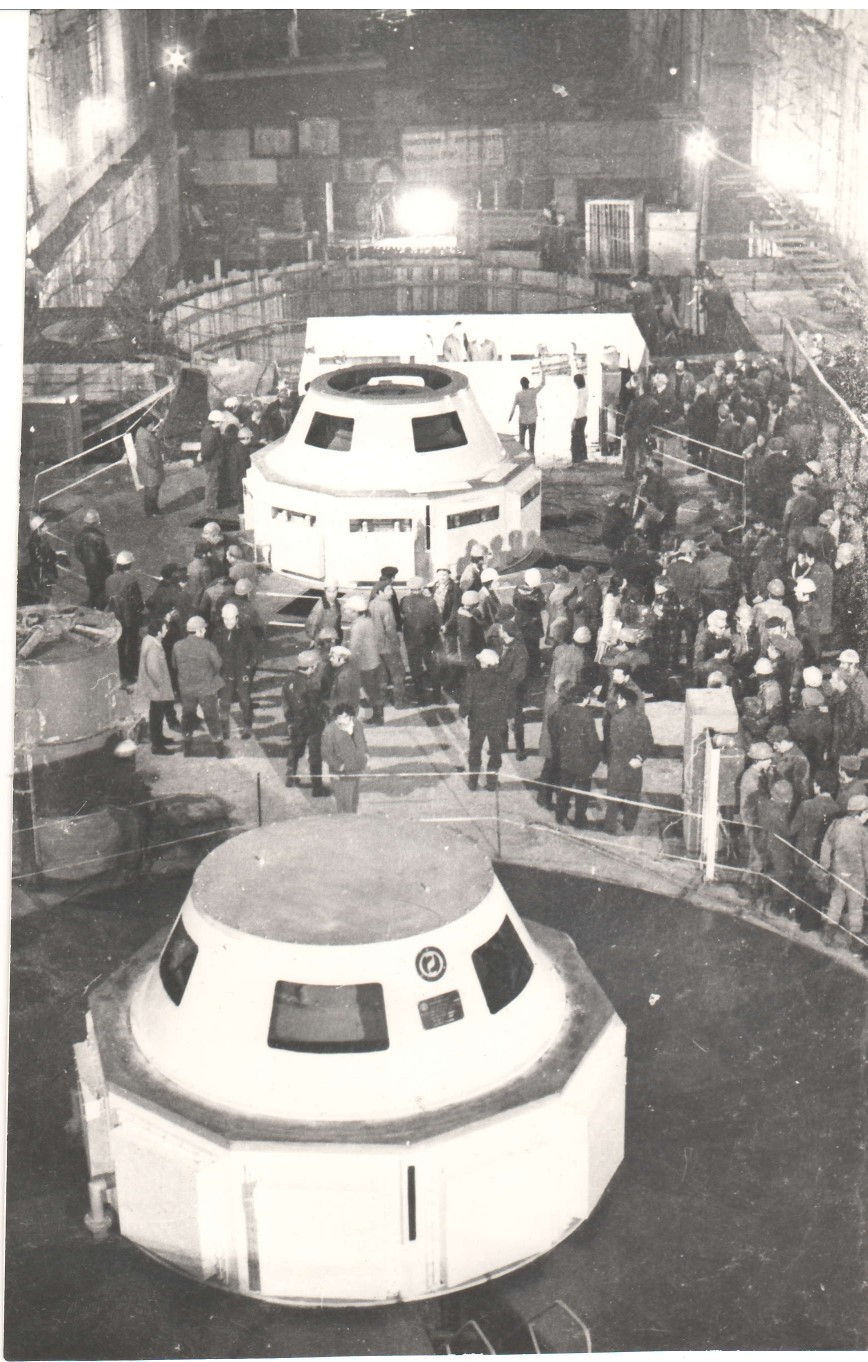The Construction
17 years of construction of Enguri HPP were accompanied by a lot of difficulties, hard work and, of course, interesting achievements. As a result of all this, the first hydraulic power unit was put into operation on November 5, 1978. Two days later, on November 7, the enterprise was connected to the unified network and Enguri HPP produced the first kilowatt-hour of electricity. Nowadays, Enguri HPP is 45 years old, and its history begins with an idea that took several decades to be realized.
Thoughts about consumption of the energy potential of the River Enguri appeared at the dawn of hydroelectric engineering - at the beginning of the XX century. Niko Nikoladze was one of the first who worked in this direction. He invited the specialists who drew up the project. However, this idea could not be realized due to volume of the construction budget and the World War I. Several projects have been prepared in connection with consumption of the hydropower potential of the River Enguri. This was in the 30s, 40s and 50s. Eventually, in 1961, the construction started with the project according to which the Enguri HPP is built today.
Construction of Enguri HPP continued for a long period after the enterprise was put into operation. This doubled the responsibility and the complexity of the task. 3 units were launched at the end of 1978, the fourth - in 1979, and the fifth - in 1980. However, construction of Enguri HPP continued for another 7-8 years and was actually completed at the end of the 80s. Moreover, certain works on the dam continued even with the rehabilitation project. approximately 60% of the arch dam was built by 1980. This means that the underground plant of Enguri HPP was put into operation, and the concreting of the dam was still going on.
Today, everyone agrees that construction of Enguri HPP was a very bold statement in the history of the Georgian engineering and technical thinking. Due to complexity of the idea and the limited experience in this direction, some specialists were skeptical. However, the optimists were also cautious, because they were frightened by the scale of the construction and the complexity of the terrain.
It should be mentioned that Enguri HPP was the first arch dam in the former Soviet Union, after Lajanuri HPP. Therefore, there was no experience in this direction. This led to necessity to involve the foreign specialists. In addition, there was no the Soviet equipment to drill the rocks on-site. That’s why they used Swedish and Finnish equipment, and the Italians and French specialists worked on the design itself.
Despite of the difficulties mentioned above, today Enguri HPP is already a world-class building. The facilities of the hydropower plant are located in the territory of Tsalenjikha and Gali municipalities. In particular, the dam, water reservoir and 10-kilometer section of the 15.5-kilometer pressure tunnel are located in Tsalenjikha, and the remaining part of the tunnel - 5.5-kilometer power joint, underground plant, hydropower units, transformers, air-insulated switchgear and tailrace tunnel are located in the territory of Gali district.
Vardnili HPP Cascade is located in Abkhazia with its full-time regulation reservoir, hydropower plant building and 26-kilometer channel. Nowadays, the main and auxiliary electrical equipment of Vardnili HPP-II, Vardnili HPP-III and Vardnili HPP-IV are looted and out of order. Vardnili HPP-I was kept in proper working order, thanks to dedication of the local specialists. It should be mentioned, that already in 1972, the first unit of Vardnili HPP-I was put into operation. At the same time, construction of Vardnili HPP-II, Vardnili HPP-III and Vardnili HPP-IV was underway. All three of them were located on the aqueduct at a distance of 5.5 km, 10.1 km and 14.9 km from Vardnili HPP-I, respectively.

